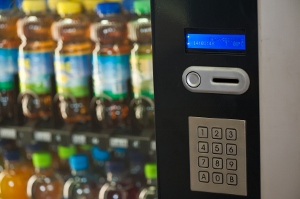 School lunches and childhood obesity are hot topics this year and as they should be. The current stats from the Centers for Disease Control and Prevention estimate that one in every five children are obese. That’s a clear picture that our kids need more help. The lunch standards are being changed and now the standards for food outside the cafeteria are being challenged.
School lunches and childhood obesity are hot topics this year and as they should be. The current stats from the Centers for Disease Control and Prevention estimate that one in every five children are obese. That’s a clear picture that our kids need more help. The lunch standards are being changed and now the standards for food outside the cafeteria are being challenged.
It’s estimated that $2.3 billion in snack foods and drinks are sold each year in our schools. The Obama administration is set to propose a change in what is sold in vending machines and school snack stores. The new standards are expected in a few weeks. Experts assume that the new guidelines will mirror those of the school lunch standards: reduction of sugar, salt, and fat amounts.
There are many impacted by these changes. Schools may face restrictions on school fundraisers, as many sell candy and sweets to raise money for sports, music, and art programs. Food and beverage companies fear that the guidelines will be too strict and they will lose revenue if they can’t sell in the schools. Many companies feel they’ve made changes to their inventory to reflect the need for healthier foods.
James A. McCarthy is the president of the Snack Food Association. He and his company have been working with the American Heart Association and the William J. Clinton Foundation, headed by former president Clinton, in an initiative called the Alliance for a Healthier Generation. Their goal is to establish voluntary guidelines for healthier foods in schools. They are now promoting items like baked chips, pretzels, and low-sodium nuts rather than fried potato chips.
Christopher Gindlesperger is the director of communications for the American Beverage Association. He explained how his company worked with schools to reduce or eliminate sugary drinks and replace them with healthier alternatives.
These actions are a step in the right direction, but will they be enough? Our kids are getting 19 to 50 percent of their daily calories from their schools. Small changes may not cut it. Some may lose funds from fund-raisers and companies may lose business, but our kids could reap great benefits.
A recent study showed that in the South, where rates of childhood obesity are the highest, less nutritious food is more common. In the West, where childhood obesity rates are lower, high-fat food is not as common. Health advocates say this study points to the need for national standards.
The numbers don’t lie and this debate is swarming with numbers. Our kids will be bombarded with unhealthy food the second they walk out the door of their schools. If keeping the food inside the school healthy could bring some of those obesity numbers down, it’s worth every penny spent or lost.
